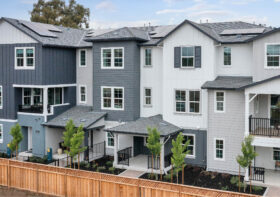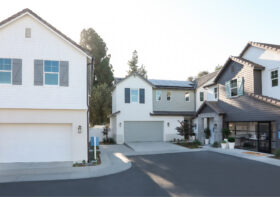ULI Mentor Program – A Tour of Los Angeles Union Station

WHA is participating in the ULI/OC-Inland Empire’s Young Leadership Group Mentor Program. This program matches young professionals under 35 years old (protégés) with experienced professionals (mentors) for guidance and support, while offering mentors an opportunity to strengthen ties with the young, future leaders of the local real estate community and the Urban Land Institute (ULI).
On Saturday March 18th, I led a group of protégés on a tour of the landmark 1939 Union Station, the last great railway station built in America. I’ve had the opportunity to be involved with the station; first as an elementary school student on a field trip in the 1960s, then during college, as a volunteer for the 40th birthday celebration when it was added to the National Register of Historic Places, and lastly as the principal designer of the Metropolitan Transportation Authority Headquarters Tower in the early 1990s when the first leg of the Metro subway system was under construction.

Metropolitan Transporation Authority (MTA) building | Union Station monument sign
I related to the ULI protégés, how my firm was invited to participate in a design competition for what is now Headquarters Tower, a 28-story building in the new eastern expansion of the station complex. It was an invited competition with ten architectural firms, including such notables as Frank O. Gehry, Cesar Pelli, Helmut Jahn and Richard Keating (then of SOM). The nearly deserted station had only a few trains per day and Catellus Corporation, the development arm of the railroad, had only recently begun the process of redeveloping the site.
The competition was to design, within a framework established by the master planner Ehrenkrantz Ektsut & Kuhn of New York City, a headquarters for what was then known as the Southern California Rapid Transit District. Over an exhausting two weeks, I led the effort to conceive and present our concept, anonymously, on four 30×42 boards for selection by a jury to advance to the three-firm only final stage. At that point, the three firms had a week to produce a detailed proposal and prepare for an oral interview. That was another sleepless week! After our presentation, I went to Puerto Vallarta for some much needed R&R, where, I received the call—we had won!
The path to implementation was a long one, including a recession when our building was the only major construction west of the Mississippi. Along the way, there were significant hurdles, not the least of which was the 1994, 6.7 magnitude Northridge earthquake. At the time, the steel skeleton was complete and served as a model for engineers to understand the effect of the quake on large structures, especially given that this quake had the fastest acceleration of movement thus recorded, with a significant upward direction of force.

Historic Union Station

Outdoor waiting rooms at Union Station
On our ULI field trip, which started at the Metrolink stations in Tustin and Santa Ana, we discussed the background of the historic part of the station, the 1995 addition and planned future additions. We also talked about architectural design details, motifs, artwork, politics, transportation issues, landscape, construction and other influences. Afterward, we went across the street to the historic Plaza, the birthplace of Los Angeles, and had lunch at Olvera Street. My team had little experience with rail transit and large-scale urban development and I believe it opened their eyes.

ULI group discussion
From a personal point of view, it’s been exciting to see the station over an almost 50-year perspective—going from a forgotten, neglected, diamond in the rough to a sparkling and vibrant hub. It shows how policy, preservation and design can create a place that positively affects the lives of many.




Leave a Reply